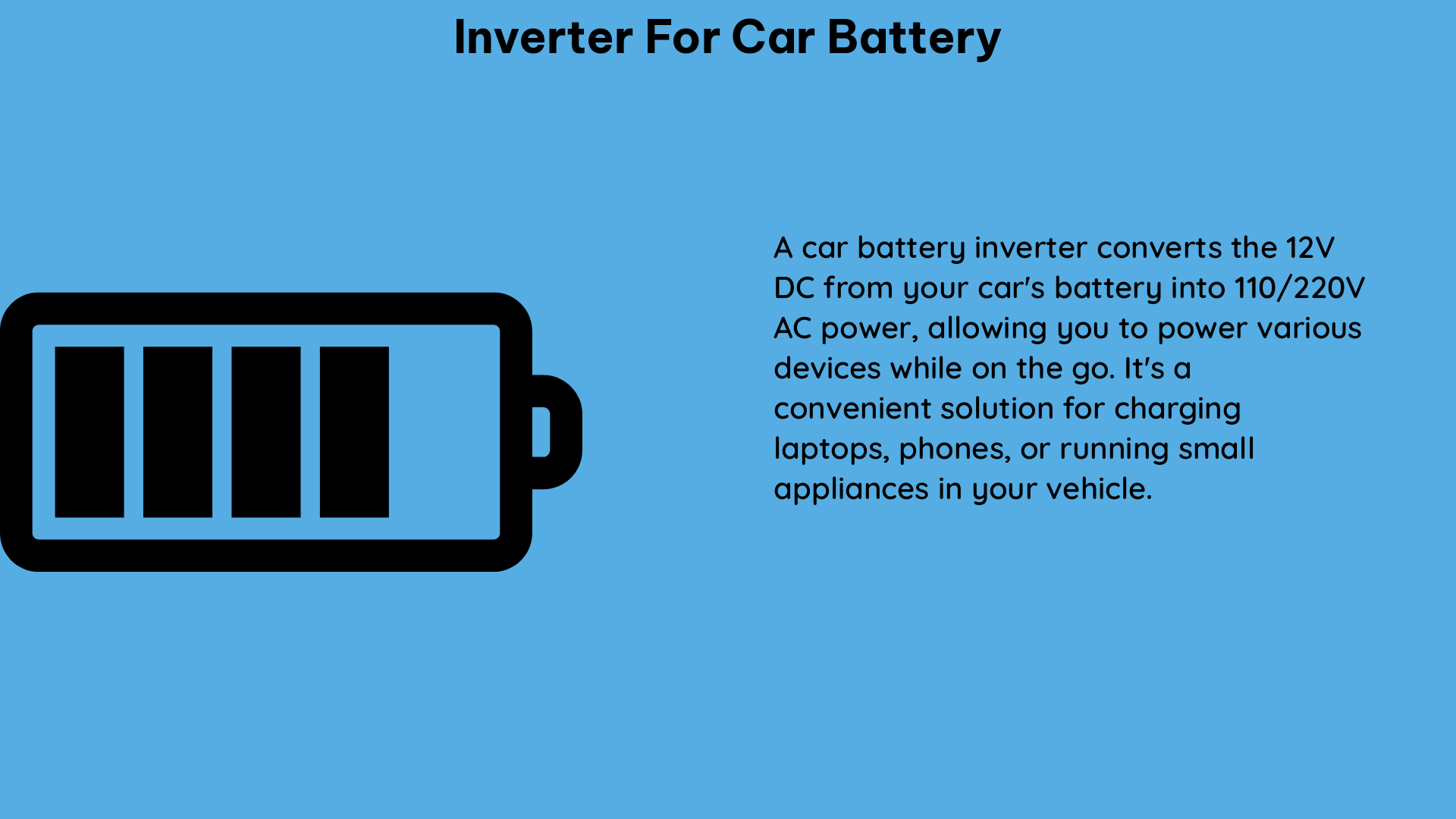Inverters for car batteries are essential tools for converting DC power from the battery to AC power, allowing the use of devices such as laptops, microwaves, and other electronics during over-the-road jobs. However, it’s crucial to understand the limitations of inverters to avoid overloading the system and ensure efficient power usage.
Understanding Inverter Output Power
Inverters have a limited output power, typically measured in watts. The output power of an inverter determines the maximum wattage of devices it can power. For instance, a 500W inverter with a peak of 1000W can power devices up to its maximum wattage. It’s important to note that the output power of an inverter is not the same as the input power from the car battery.
| Inverter Output Power | Maximum Wattage of Devices |
|---|---|
| 500W | 500W |
| 1000W | 1000W |
| 1500W | 1500W |
| 2000W | 2000W |
Calculating Battery Capacity

A 12V car battery typically supplies 85Amps, which can power a computer for 12 hours and 24 hours with proper efficiency. To calculate the battery capacity, you can use the formula:
Battery Capacity (Ah) = Battery Voltage (V) × Battery Amperage (A)
For example, a 12V car battery with 85Amps has a battery capacity of 1020Wh (12V × 85A = 1020Wh).
Insulation Resistance Testing
Inverter insulation resistance testing measures the insulation between the terminals and ground, ensuring it’s at least 5 MΩ. This test is crucial to ensure the safety and proper functioning of the inverter. The insulation resistance should be measured using a high-voltage insulation tester, and the results should be within the manufacturer’s specifications.
Voltage and Current Measurement
Voltage and current measurements on the secondary side of the inverter should consider the waveform’s frequency range. Inverters can produce different waveforms, such as modified sine wave or pure sine wave, which can affect the accuracy of the measurements. It’s important to use a multimeter or oscilloscope that can handle the specific waveform produced by the inverter.
Determining Runtime
To determine how long a device can be powered by an inverter, you can use the formula:
Device Power Supply (in watts) / Inverter Output Power (in watts) = Hours of Power
For example, a 200W computer can be powered for approximately 0.4 hours (24 minutes) by a 500W inverter.
It’s important to note that the actual runtime may vary depending on factors such as the battery’s state of charge, the efficiency of the inverter, and the power consumption of the connected devices.
Avoiding Overloading the System
When dealing with battery issues, it’s essential to consider the inverter’s output power, battery capacity, and device power requirements to avoid overloading the system and ensure efficient power usage. Overloading the system can lead to battery drain, inverter damage, and potential safety hazards.
By understanding the technical details and limitations of inverters for car batteries, you can ensure safe and efficient power usage for your devices during over-the-road jobs.
References
- Measuring an Inverter’s Output
- How to Test an Inverter
- How Long Can I Run My Computer Using an Inverter?
- Inverter Test: Common Devices
- Car Battery, Inverter, Battery Maintainer, Same Car Battery, Jumper Cables

The lambdageeks.com Core SME Team is a group of experienced subject matter experts from diverse scientific and technical fields including Physics, Chemistry, Technology,Electronics & Electrical Engineering, Automotive, Mechanical Engineering. Our team collaborates to create high-quality, well-researched articles on a wide range of science and technology topics for the lambdageeks.com website.
All Our Senior SME are having more than 7 Years of experience in the respective fields . They are either Working Industry Professionals or assocaited With different Universities. Refer Our Authors Page to get to know About our Core SMEs.